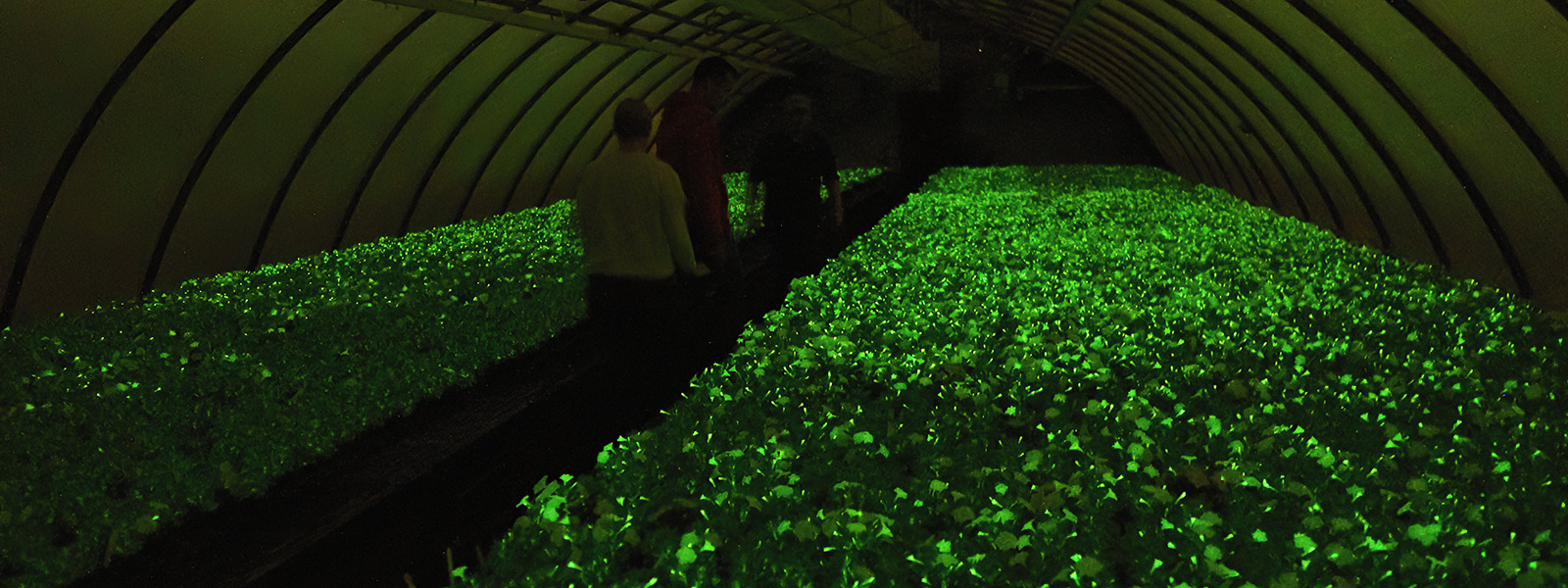How the bioluminescent petunia got its glow
Petunias have never done much for me. If you had told me that one day, I’d fork over more than $50 for a single petunia plant, my eyes would have rolled out of my head. But this plant was special. This petunia glowed in the dark.
My plant was one of 50,000 shipped around the United States in April by the Idaho-based biotech start-up Light Bio. Called the “Firefly” petunia, it contains genes from bioluminescent mushrooms that make it constantly glow…
Bioluminescence is the emission of light by living things. It is generated by a chemical reaction within the organism (unlike the phosphorescence of glow-in-the-dark stickers, which need to be charged up with light before emitting it). Bioluminescence is widespread, especially in the oceans: There are bacteria, sea snails, shrimp, fish and squid that glow. Terrestrial glowers include some insects and worms as well as fungi.
Scientists have worked out the precise chemical compounds involved for only a handful of bioluminescent organisms. But for the most part, the basics of the light-producing reaction are the same: It requires fuel, oxygen and a catalyst to get the reaction going. In the parlance of bioluminescence research, the fuel is called the luciferin and the catalyst is called the luciferase. The luciferase helps to add oxygen to the fuel, transforming it into a very reactive, high-energy compound. As this overexcited luciferin relaxes, it emits light.
This ability to produce light has been documented in hundreds of genera across the tree of life. Scientists think it evolved independently in various lineages, perhaps more than 94 different times.
I think I’ll see about getting one of these next year. Probably not worth that much, but the novelty is pretty neat.



